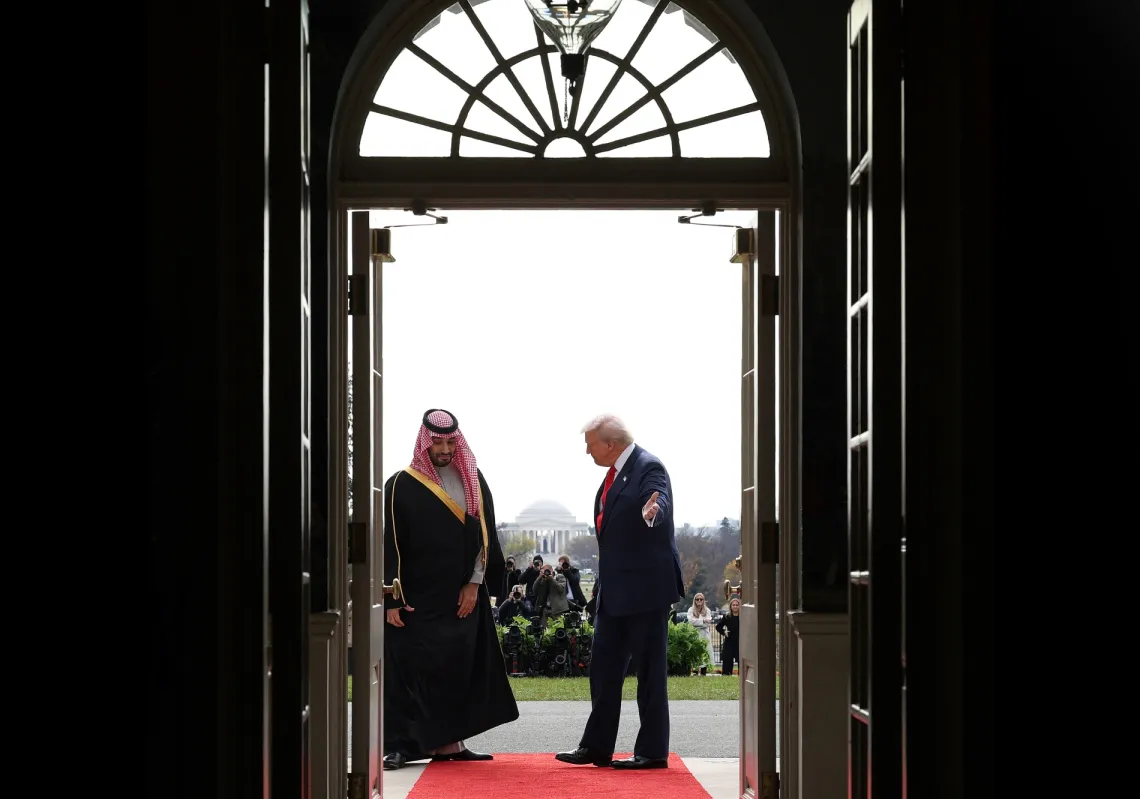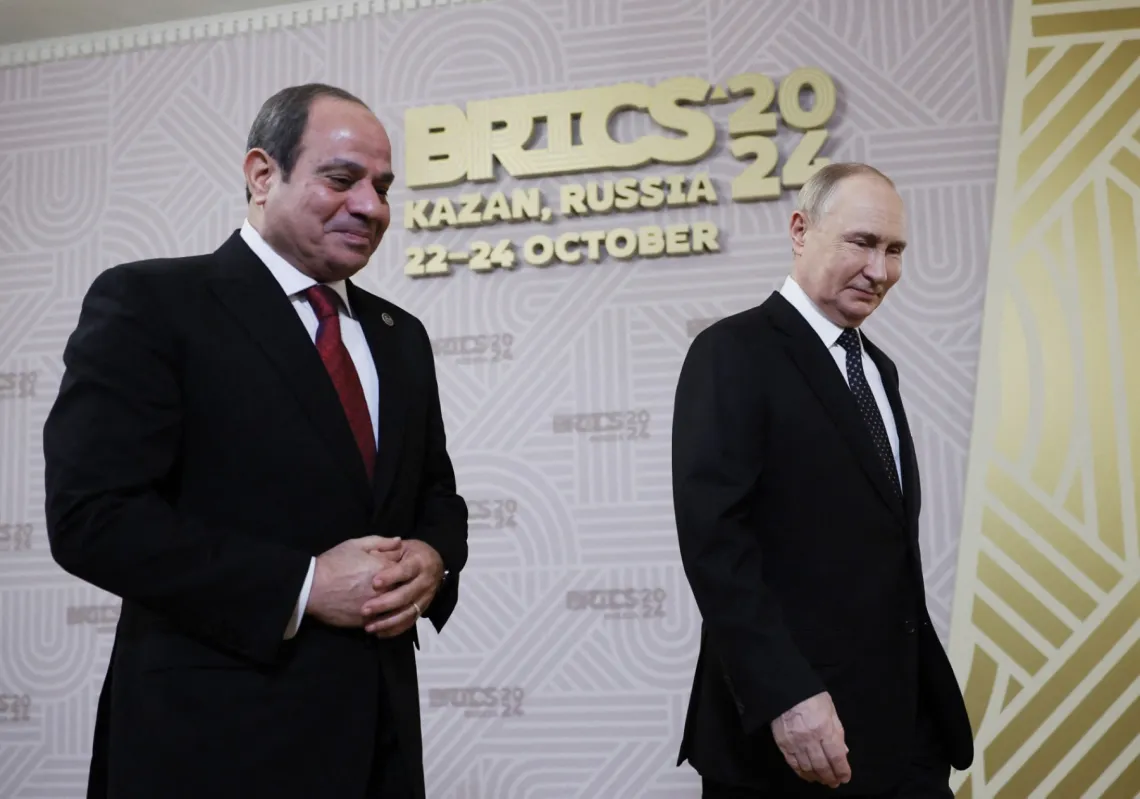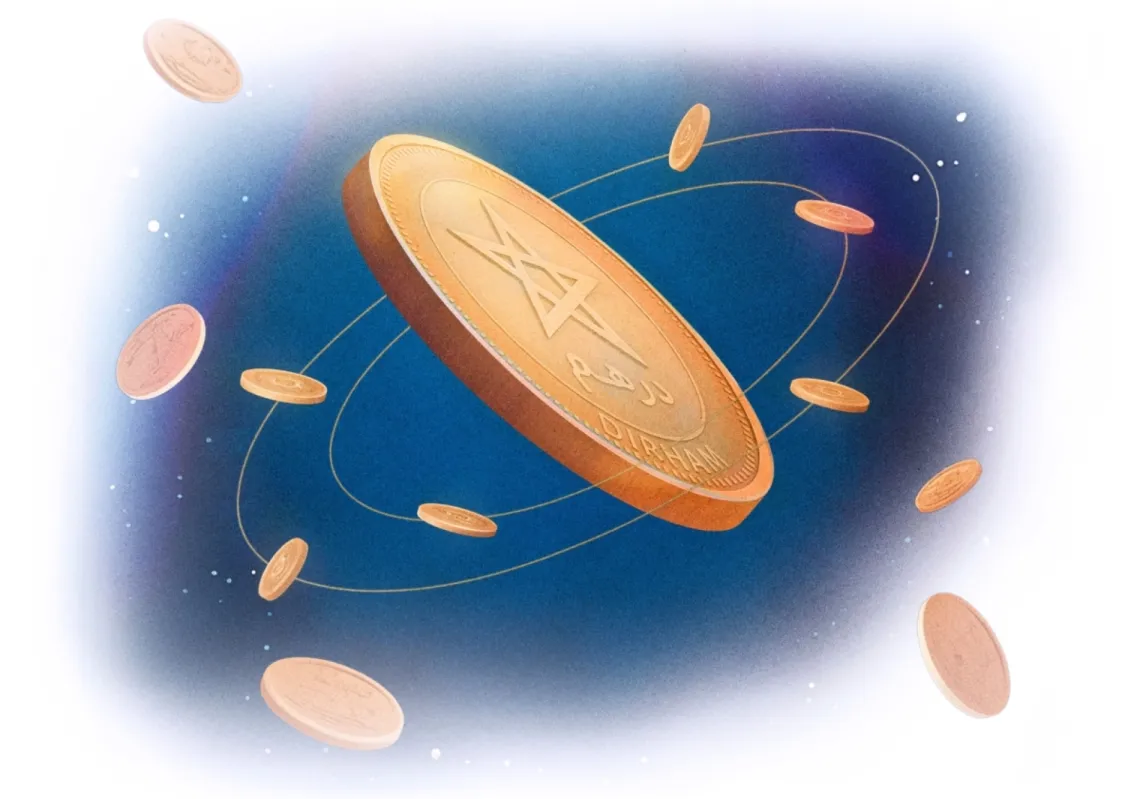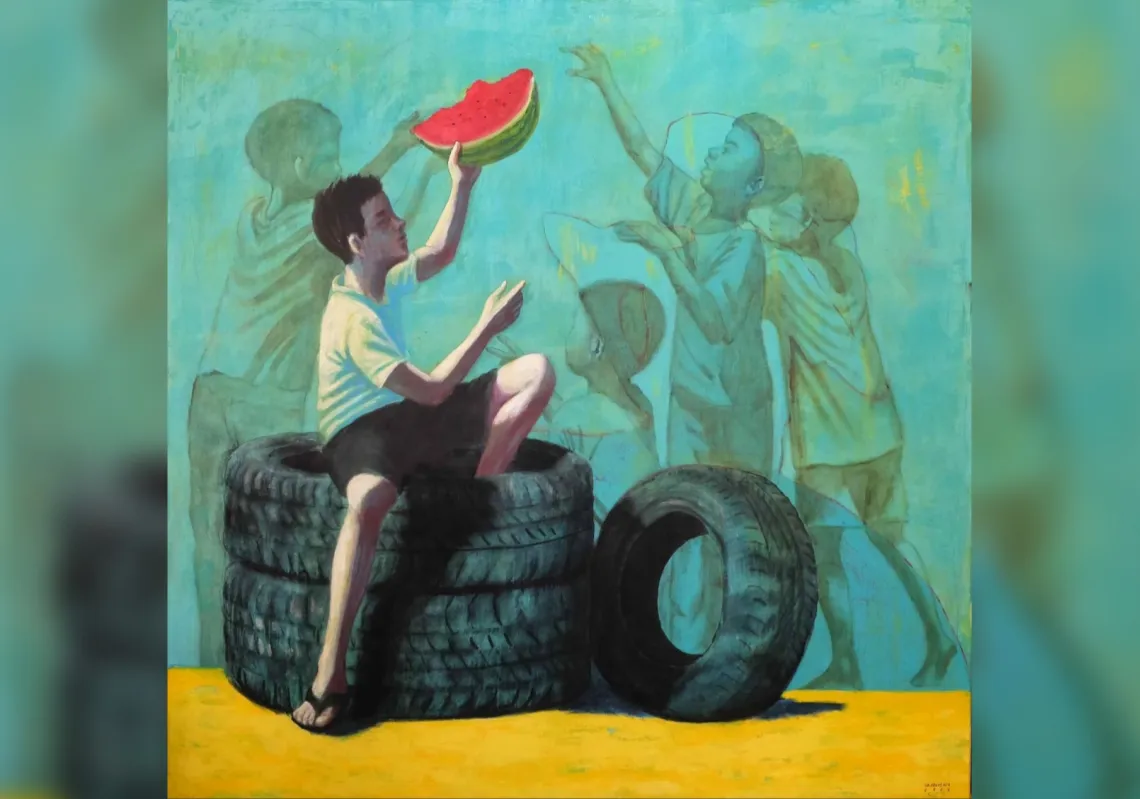 Abdulnasser Gharem, Portrait of the Artist from the Performance Flora and Fauna, 2007 (Courtesy Edge of Arabia )[/caption]
Abdulnasser Gharem, Portrait of the Artist from the Performance Flora and Fauna, 2007 (Courtesy Edge of Arabia )[/caption]
Abdulnasser Gharem is the highest-selling artist in the Arab world. Let us get that out of the way, because as important as it sounds, it really is irrelevant to the value of his work. Earlier this month, he opened his exhibition with London’s Edge of Arabia, an independent arts initiative co-founded by Gharem.
The forty-year-old artist, who is from the southern part of Saudi Arabia, recalls how before the days of the Internet he suffered while trying to find any books or information on art. There were no galleries or museums, and art books were rare. However, the Internet changed that. The first time he went online, he sat in front of his computer for nine hours, “just checking to see what the museums or other artists are doing, what kind of medium they are using. So it became my main source of knowledge,” he tells The Majalla.
Today, his works are intended as couriers of knowledge. They hold hidden messages, texts in Arabic and English, and motifs that are layered commentaries on the Saudi society and its past and present. For the most part, these codes of identity are for the outside world. “Usually, they hear about us through the media, which is not true. So I’m trying to give them a kind of national language, which is free of ideology,” he says. “They should know who we are through us, and art is a great channel for ideas.”
Gharem certainly provides plenty of ideas. In his Stamp series, calligraphic words on rubber surfaces are embossed onto the wooden bases of oversized stamps. The stamps, (similar to those used on official documents) lying around the exhibition as if on an office desk, send a chilling message about institutionalized ideologies and their effect on restricted or predetermined minds. The most striking piece in the entire show is one of these, called Moujaz (2013), which means ‘in accordance with Shari’a law.’ The stamp’s wooden base and ornate designs are hand-carved by Moroccan craftsmen, radiating a richness that makes it less threatening and more like an object of desire. One could imagine a giant hand using it to print beautiful texts on walls, like graffiti.
The artist’s fascination with stamps transfers to paintings and sculptures. In this case, the stamps provide the canvas for digital prints and painted images. These images mostly depict architecture—domes or mosques—or cityscapes, juxtaposed with military aircraft, such as In Transit—Fighter or street signs, like Road to Makkah V. The silk-screen prints, discretely sprinkled with diamond dust, are another manifestation of the artist’s fixation with ubiquitous religious symbols and power—and the glamor that comes with them.
Gharem’s works are extremely calculated and precise. There is a vivid tension between order and disorder, between permission and precaution. His military background as a lieutenant colonel in the Saudi army may have something to do with his clarity of vision. “I become a physical medium for the idea,” he says of his process. “I think about the concept and build it very well, and then I think about what’s the best way to produce it.”
His videos, however, may be the least successful medium. In the video Flora & Fauna, Gharem takes us to the streets of Khamis Mushait, where the municipal authority planted thousands of lush sapling trees along the main road. Soon after they reached maturity, other surrounding trees began dying off. Gharem covers one of these trees with a plastic sheet while also trapping himself inside. As a performance piece, it seems clever and engaging, and I can only imagine what random passers-by thought upon seeing him in that state. Yet in the photo editions, Gharem looks uncomfortable and confused (even if that is intentional), and in the video the message is even less clear. Other videos, part of an on-going series, are colorful collages of images from secluded scenery that are strange to the foreign eye. In them, Gharem wears a red shirt with the word Manzoa (meaning “to be demolished”) on the back in white, travels to shantytowns, and speaks to people. They invite the audience on a trip, but the video fails to finish that journey.
Of the running calligraphic and written motif, Gharem blames—or credits, depending on how you view it—his background. “I’m coming from a text culture and it’s hard for me to translate and twist it to something visual,” he says. “You know Islam is based on text, so I’m trying to transfer it to a visual thing, and people in my world are not used to it.” This transferring of ideas to a semiotic or visual form are the most effective when he works three-dimensionally. The paintings and prints are less riveting, more repetitive. There is the familiar ‘old versus new,’ especially as it applies to Middle Eastern art, where calligraphy and Islamic designs representing tradition are juxtaposed with modern elements, concepts and media. Gharem’s sculptures, installations and performances are cryptic, brave and meaningful, and instantly recognizable as his.
His now-famous Message/Messenger, a large, three-meter-wide wood and copper installation of a decorated golden dome symbolizing the Dome of the Rock in Jerusalem, is a great example. The dome is held up from one side like an animal trap, and inside there is a small dove, warmly lit. It is a fascinating piece that deconstructs popular religious symbols in a subtle and engaging language. In 2011, it sold at auction at Christie’s for USD 842,500, and Gharem donated the money to various educational programs in his country.
As a boy once enthralled and transformed by the ocean of art and information revealed to him through the Internet, Gharem wants to enable the same experience for other Saudi artists. He has made it his mission to help develop the country’s emerging art scene, which is increasingly more confident. “I’ve learned it from the army, too,” he says, “that you need to succeed in your mission.”
Abdulnasser Gharem will be showing at Edge of Arabia, London, until November 8, 2013.







